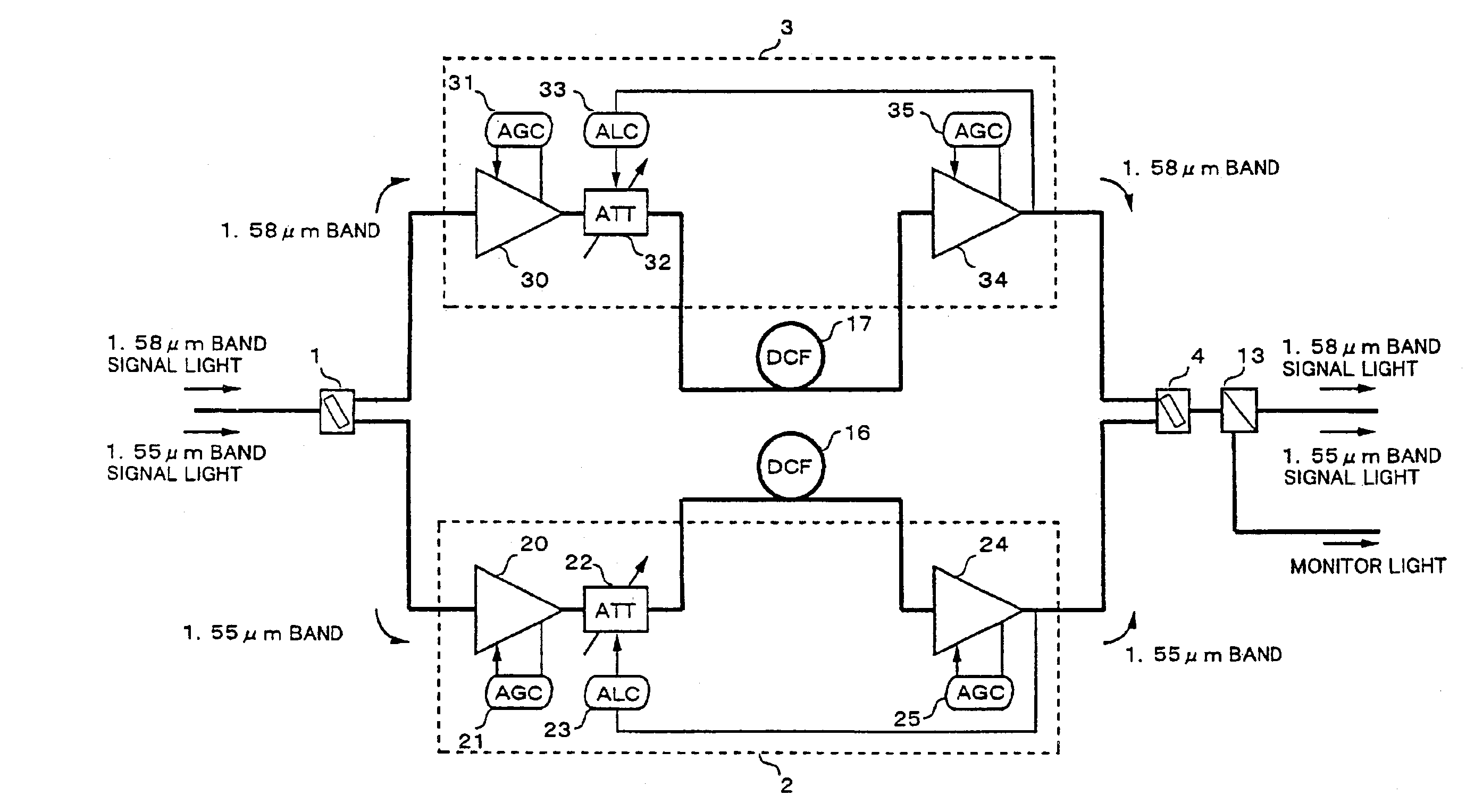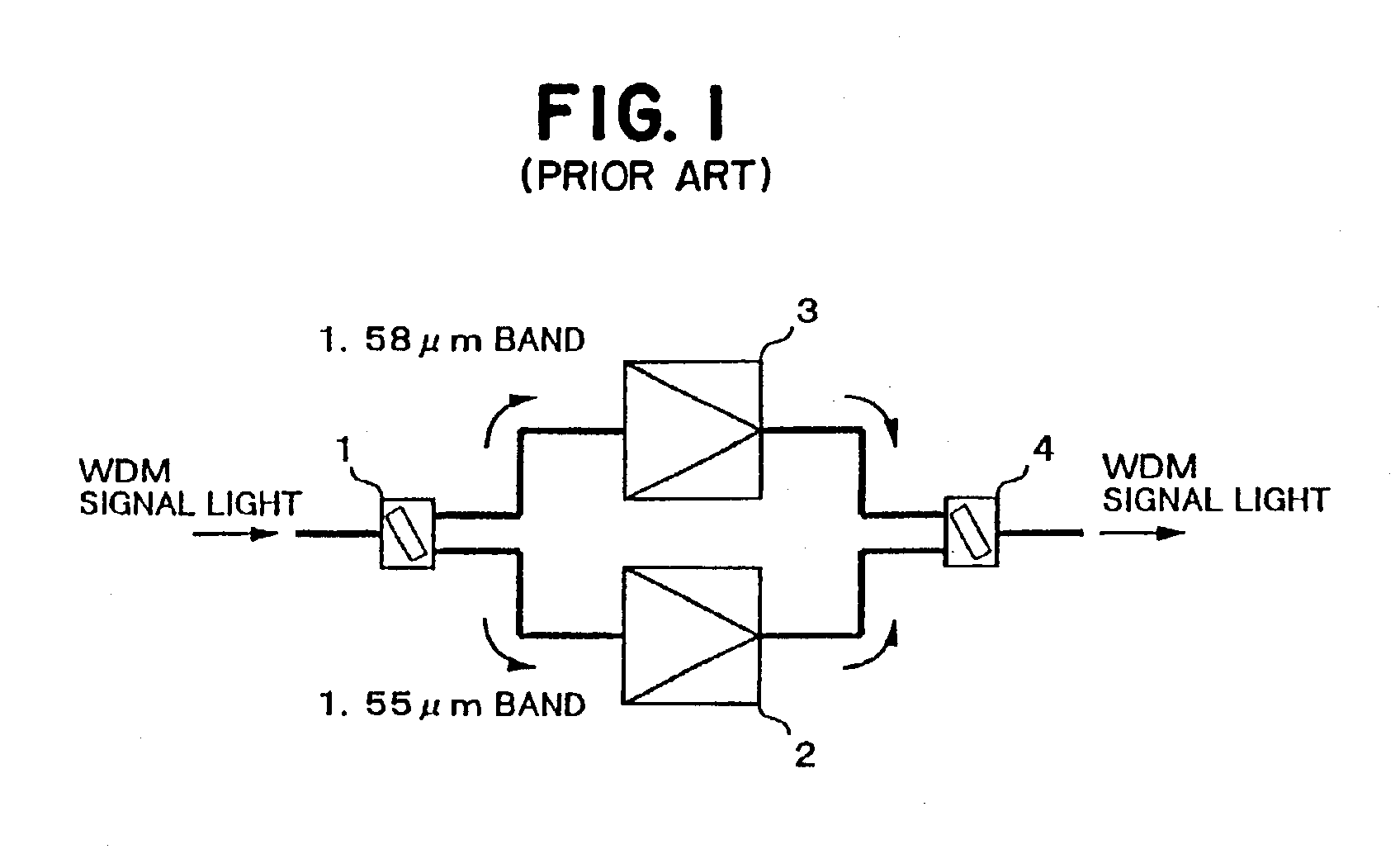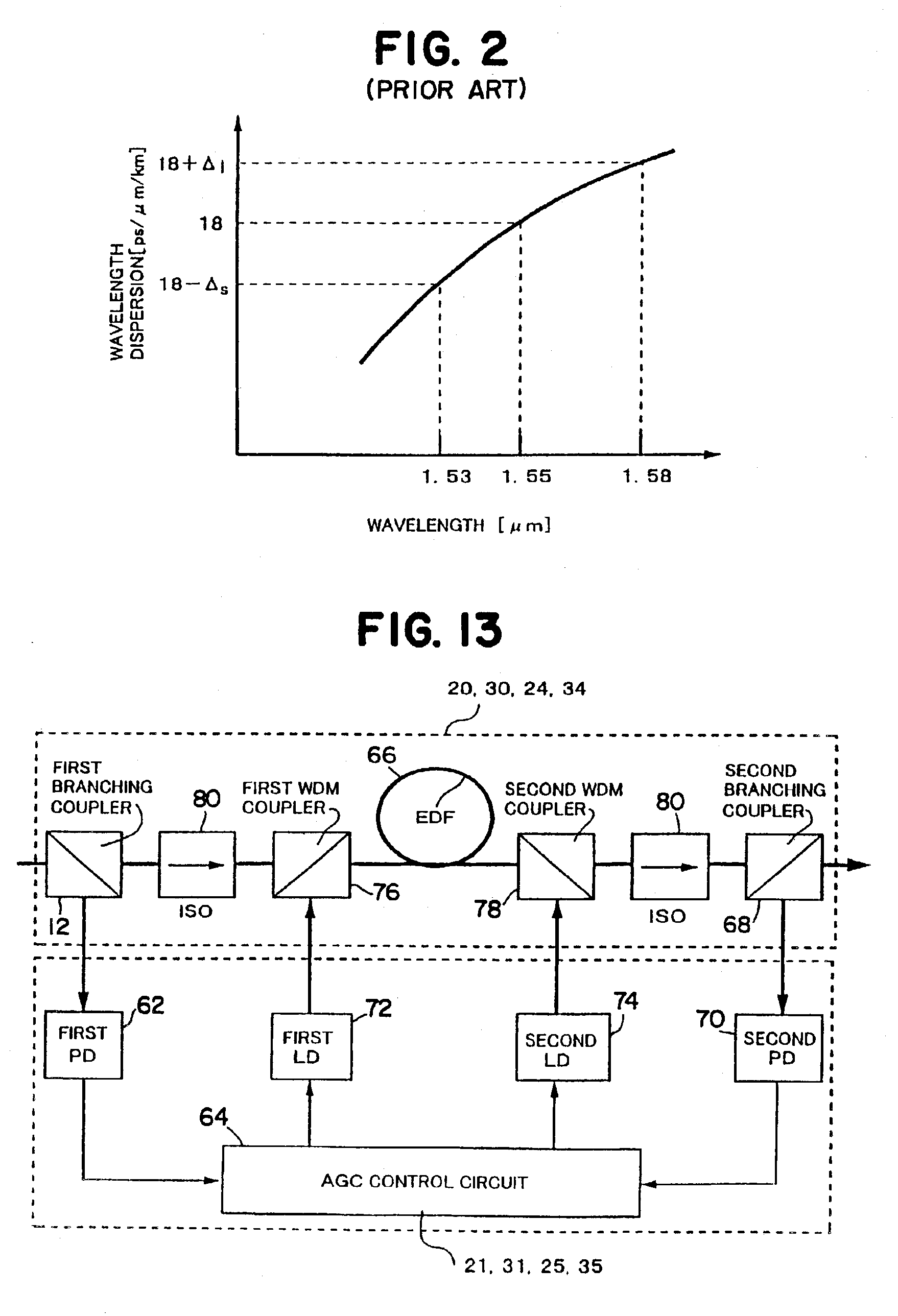Optical amplifier for amplifying a wavelength division multiplexed (WDM) light including light in different wavelength bands
a technology of optical amplifier and wavelength division multiplexing, which is applied in the direction of optical transmission, line-transmission details, electromagnetic repeaters, etc., can solve the problems of difficult to obtain equal gain over a wide band exceeding 60 nm, waveform distortion, transmitted waveform distorted, etc., and achieve the effect of reducing the probability of nonlinear optical effect in the dispersion compensating fiber
- Summary
- Abstract
- Description
- Claims
- Application Information
AI Technical Summary
Benefits of technology
Problems solved by technology
Method used
Image
Examples
Embodiment Construction
[0047]Reference will now be made in detail to the present preferred embodiments of the present invention, examples of which are illustrated in the accompanying drawings, wherein like reference numerals refer to like elements throughout.
[0048]FIG. 3 is a diagram showing an optical amplifier, according to an embodiment of the present invention. Referring now to FIG. 3, a WDM signal light from, typically, a SMF (not illustrated) includes signal light in a 1.55 μm band and a 1.58 μm band. A WDM coupler 1 demultiplexes the WDM signal light according to the wavelength bands, and the signal light in the 1.55 μm band is sent to a 1.55 μm band optical fiber amplifier section 2, and the signal light in the 1.58 μm band is sent to a 1.58 μm band optical fiber amplifier section 3. As an example, the signal light in the 1.55 μm band might include signal lights of thirty two waves multiplexed in a wavelength band from 1535 nm to 1565 nm. As an example, the signal light in the 1.58 μm band might i...
PUM
 Login to View More
Login to View More Abstract
Description
Claims
Application Information
 Login to View More
Login to View More - R&D
- Intellectual Property
- Life Sciences
- Materials
- Tech Scout
- Unparalleled Data Quality
- Higher Quality Content
- 60% Fewer Hallucinations
Browse by: Latest US Patents, China's latest patents, Technical Efficacy Thesaurus, Application Domain, Technology Topic, Popular Technical Reports.
© 2025 PatSnap. All rights reserved.Legal|Privacy policy|Modern Slavery Act Transparency Statement|Sitemap|About US| Contact US: help@patsnap.com



